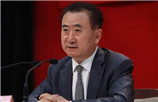Capital outflows not severe concern in China as US expected to slow rate hikes
(Xinhua) Updated: 2016-03-04 10:14"The worst period of concerns about sharp depreciation of the yuan and dramatic capital outflows from China may be over," he said.
Zhou also noted that capital outflows from China were "not necessarily bad," citing the appropriate diversification of assets by Chinese households and companies from home to overseas as a healthy development. Given generally higher returns in China than abroad, he believed Chinese households and companies would finally "make mart investment choices."
The Institute of International Finance (IIF), a global association representing about 500 financial intuitions, estimated that a large part of capital outflows from China last year were repayments of dollar-denominated debts by Chinese companies, in order to mitigate the impact of the dollar appreciation. Once Chinese companies repay most of their offshore debt, outflow pressure could ease.
Zhou's view on capital flows was echoed by officials at China's central bank. Yi Gang, vice governor of the PBOC, said Sunday that the recent drop in China's foreign exchange reserves was mainly due to a rise of foreign exchange assets in residential accounts and a reduction of foreign exchange liabilities, which are not likely to last for long.
"This process has a limit and the capital outflows will gradually slow down," Yi said, adding that China still enjoys high trade surplus and direct foreign investment, resulting in still-fast capital inflows.
Yi recognized some volatility on the yuan exchange rate, but said markets should not overreact, as the yuan's fluctuation range is still smaller than many other currencies. He was confident that the currency's fundamentals rather than short-term speculation will drive the exchange rate in the long term.
Despite of downward pressure, the yuan exchange rate remained generally stable against a basket of currencies in February, China Foreign Exchange Trading System (CFETS) said Thursday in a note.
The yuan exchange rate index based on the CFETS basket and the BIS (Bank for International Settlements) basket depreciated 0.52 percent and 0.35 percent respectively last month, while the index based on the SDR (Special Drawing Rights) basket appreciated 0.14 percent, according to the CFETS.
Charles Collyns, managing director and chief economist of the IIF, said the attention will now focus on the outcome of the upcoming annual sessions of China's top legislative and national advisory body starting on Saturday, which will set the growth target and the key fiscal and reform priorities for 2016.
"The hope seems to be that the announcement of further initiatives to strengthen confidence in growth and reform will reduce exchange rate pressures and allow calm to be restored," Collyns said Monday in a research note.
"I will be looking for measures that support the growth of consumption such as hukou (household registration system) reform or more fiscal spending on health and education," David Dollar, an expert on Chinese economy and senior fellow at the Brookings Institution, said of China's annual parliamentary session.
"China could also help the economy by opening up more of the service sectors to foreign investment and competition," Dollar told Xinhua.
- Chinese car market has great potential: Audi CEO
- Macao's GDP contracts 20.3% in 2015
- 'Sharing economy' seen as next big force by NPC deputy
- Internet, auto tycoons seek standards for self-driving cars
- Huawei to expand in Seattle area
- Chinese herb Ginseng trade sees potential
- Launch of new board for strategic emerging industries 'on track'
- Guotai Junan Securities relaxes margin trading conditions
















